In DC to low-frequency sensor signal conditioning applications, relying solely on the common mode rejection ratio (CMRR) of the instrumentation amplifier is not sufficient to provide robust noise suppression in harsh industrial environments. To avoid unwanted noise propagation, the components in the low-pass filter at the input of the instrumentation amplifier must be properly matched and adjusted to allow for internal EMI/RFI filtering and CMRR. The noise is attenuated to an acceptable signal-to-noise ratio (SNR).
The low-pass filter shown in Fig. 1 is taken as an example. The resistive sensor is connected to a high impedance instrumentation amplifier through a low pass filter network consisting of RSX and CCM. Ideally, if the CCM of each input pin is fully matched, the amount of noise common to both inputs will decrease before reaching the INA input.
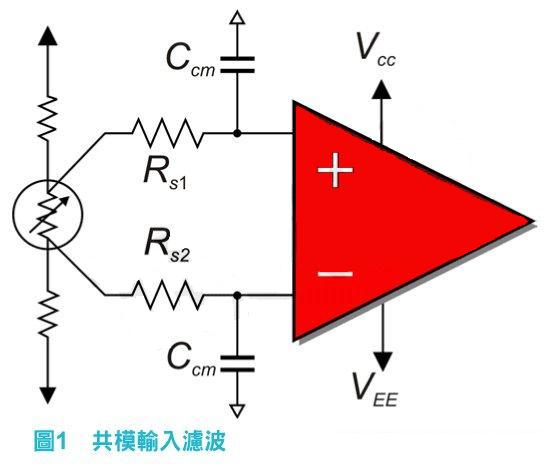
When the common mode filter capacitor (Ccm) is perfectly matched, the noise is almost completely attenuated. Figure 2 shows this result in a TINA SPICE simulation where a 100mVpp, 100kHz common mode error signal is injected into the INA333 input.
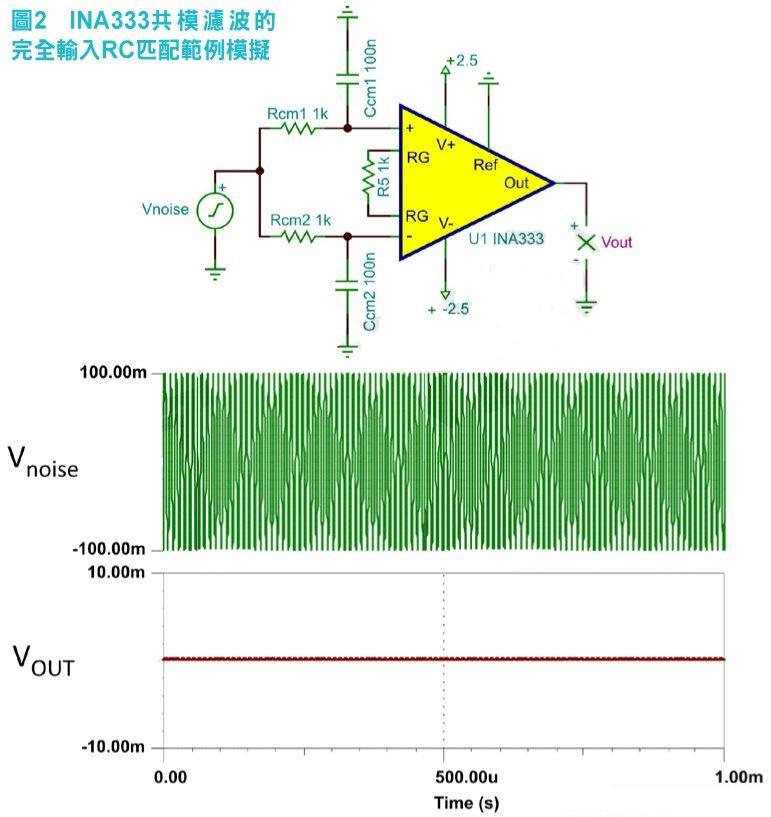
The problem with this approach is that the off-the-shelf capacitors have a typical tolerance of 5% to 10%. If the Ccm of each pin does not match, the total differential tolerance will be as high as 20%. Figure 3 more clearly shows the case of a capacitor mismatch, while showing the common mode noise input (eN) at the output of the resistive sensor.
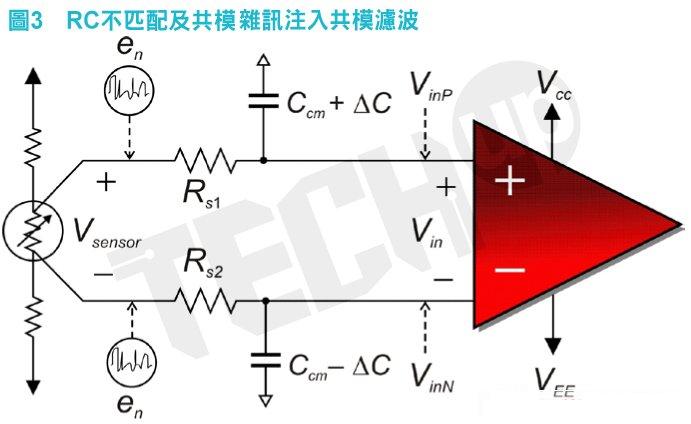
This input mismatch (?C) forms a cutoff frequency error such that the common mode noise eN differentially enters the INA input and then passes through the gain output to become the error voltage. Equations 1 through 3 show the amount of common mode noise arriving at the input:
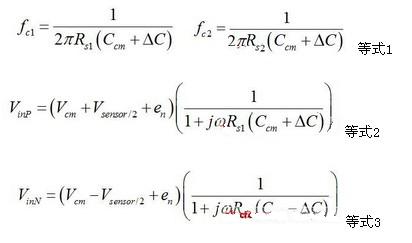
Assume that the frequency of the sensor signal Vsensor is much lower than the noise-cut frequency of all common-mode filters (ie, fC≥100*fsensor), and RS1=RS2, it is converted into differential noise. The signal (eIN) becomes a common mode noise signal (eN) of VIN, as shown in Equation 4:
 Equation 4
Equation 4
Equation 4 further shows that when a 100mVpp, 100kHz common mode error signal is input to the INA333, and the 1.6kHz filter cut-off frequency RC mismatch is 10%, the resulting errors are as follows:
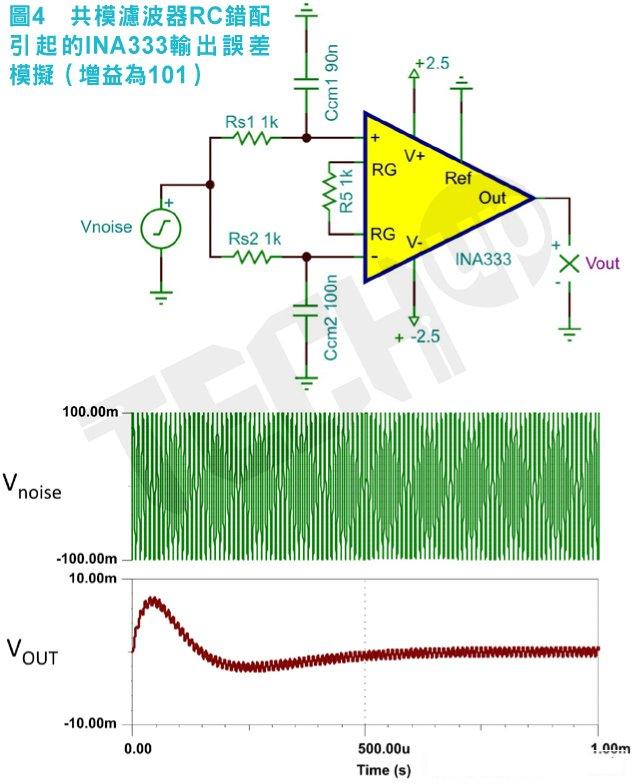
Figure 5 shows a more efficient and more common input filtering method in which a differential capacitor Cdiff is added between the instrumentation amplifier inputs.
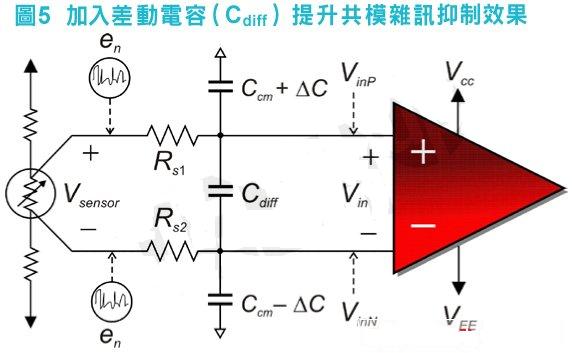
Adding this capacitor does not completely solve the problem. Cdiff must be adjusted according to the following two standards:
The cut-off frequency must be high enough to stay away from the signal bandwidth and indeed stabilize the filtering.
The differential cut-off frequency must be low enough to reduce common mode noise to an acceptable level, allowing the instrumentation amplifier CMRR to perform residual noise rejection and ultimately achieve an acceptable SNR. Equation 5 presents the general principle for making this adjustment:
Figure 6 shows the comparison of the VinP and VinN plots with the two frequencies without Cdiff and Cdiff = 1μF. It must be noted that the output of the INA333 will vary without differential capacitance. This difference is amplified to the output, which becomes the noise that ultimately reduces the SNR. When Cdiff = 1 μF, the difference between VinP and VinN is the smallest.
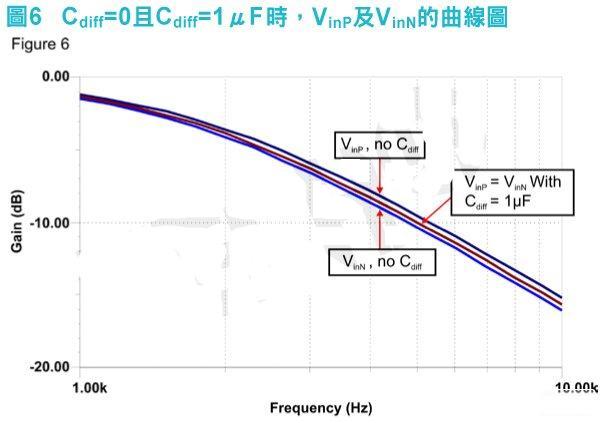
Figure 7 shows the overall noise performance improvement of the INA333 output at Cdiff = 1μF.
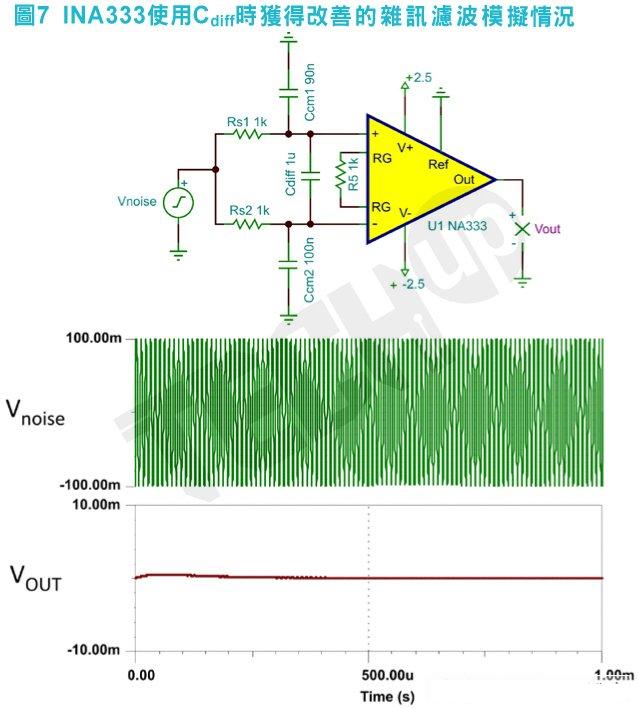
In summary, the low-pass filter installed at the front end of the instrumentation amplifier should have a differential capacitor that is at least 10 times higher than the common-mode capacitor. In this way, by reducing the influence of the Ccm mismatch, the common mode noise becomes differential noise, and the efficiency of the filter is greatly improved.
Flum Float,Flum Float 3000Puffs,Fruits Flavors Flum Float,Electronic Cigarettes Flum Float
Nanning Nuoxin Technology Co., LTD , https://www.nx-vapes.com